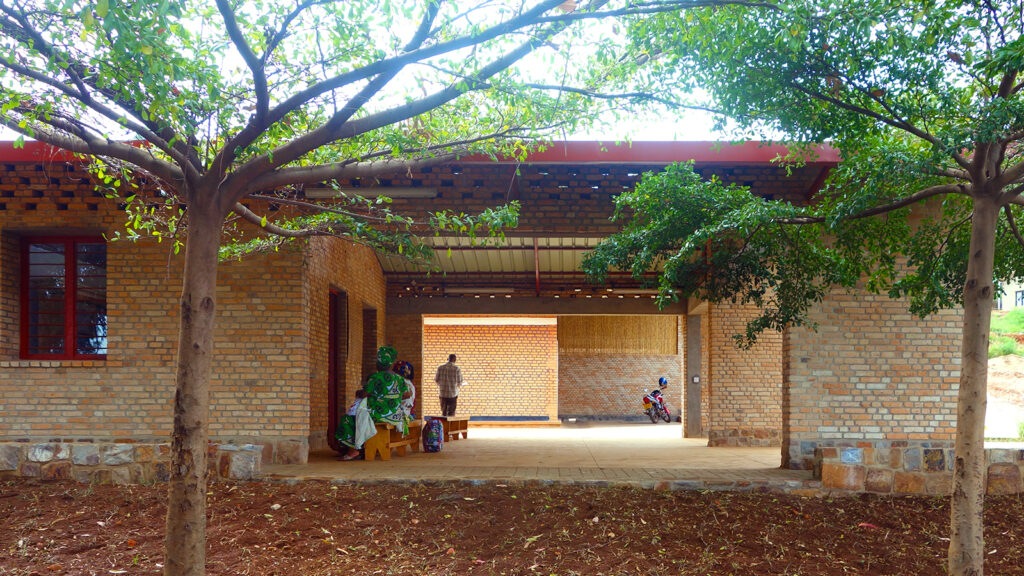
Just outside metropolitan Kigali, the Masoro Health Centre by the nonprofit General Architecture Collaborative (GAC) is part of a multi-decade push by the Rwandan government to improve its healthcare system, which includes clinics in underserved regions. GAC’s center administers curative and maternity services, as well as preventative care, for more than 20,000 residents within a 10 square-mile area in the foothills of the Virunga Mountain Range that define the borders of Rwanda, Uganda, and the Democratic Republic of Congo. The center spreads across multiple buildings, all modest in scale, separated by services and functions to facilitate queuing and create a restful campus atmosphere. In addition to community health, the center’s architects also addressed the ecological and economic health of the region by identifying local materials and training laborers and students from the University of Rwanda in building trades to complete the 1.3 acre campus.
“In Rwanda you can use bricks structurally, which you can’t in the United States. So, that has led us to some interesting opportunities,” says Leighton Beaman, co-founder of GAC and a design principal on the project. “We came up with several brick patterning techniques that allow us to make structural walls out of bricks that are fired locally,” he says, noting that extensive concrete construction is cost prohibitive because of the limited availability of formwork material. “The buildings become quite minimal in the end,” says Beaman.
Rwanda’s Northern Province connects Kigali’s metro region and Uganda’s southwestern border, has some of the densest population centers, and is estimated to be home to about two million people, or about one sixth of the country’s population. The country has been described as a beacon for universal healthcare among central African nations in the lakes region. For the last two decades, Rwanda’s Ministry of Health has implemented its Community-Based Health Insurance initiative, which provides for uninsured Rwandans across the country. In partnership with Belgian NGOs, the Ministry of Health has also supported clinics and health centers in the Bugesera district, south of Kigali, and the Gakenke and Rulindo districts of the Northern Province.
GAC’s principals, which include Beaman, Yukata Sho (another design principal on the Masoro center) and James Setzler (Masoro’s principal-in-charge), have worked together since 2005 and formed the design practice in 2008, later converting it to a non-profit in 2011. After graduating from Harvard’s GSD, Beaman says the three co-founders were wary of theory and “polemical projects” of school, which fell short of their desire to connect community needs with the traditional pathways for architectural production. They began traveling to Rwanda on behalf of GAC while also teaching and working at schools and firms in the United States. Their first project together was a community center in Kigali and, with support from the Kate Spade On Purpose initiative, completed the community health center in 2018. Since then, GAC has begun work on a learning and support center, an orphanage, and a women’s craft brewery in the region.
“If I were to summarize what we’re trying to do going forward,” says Beaman, “it’s to try and bring design to people who are overlooked because they don’t have the means to afford design.”
GAC has expanded the scope of their work beyond design to building, construction and safety training, trade skill workshopping, and fundraising. Beaman says the goal is to identify community needs and eliminate barriers to addressing that need through architecture. “By expanding our scope, we can make sure workers are fed and that money is going into their pensions, too,” he says. “This is not typical for Rwanda, but it’s something that we’re committed to doing.”
About the author
William Richards is a writer and editorial consultant based in Washington, D.C. From 2007 to 2011, he was the Editor-in-Chief of Inform Magazine.
